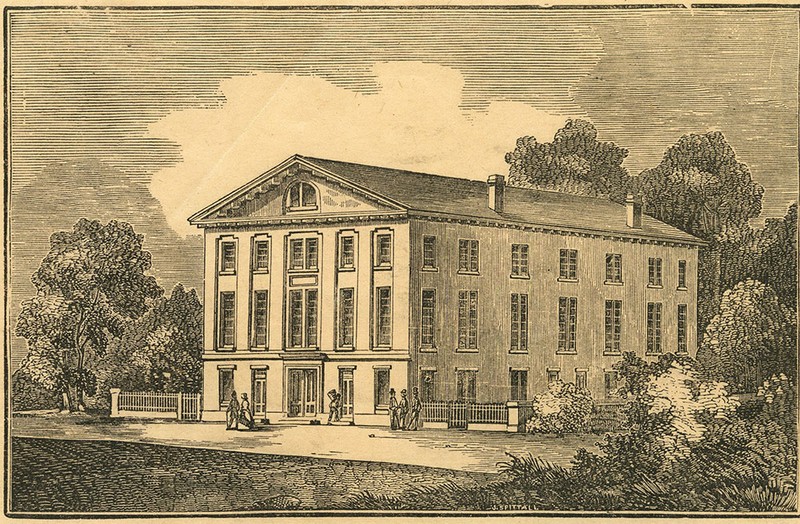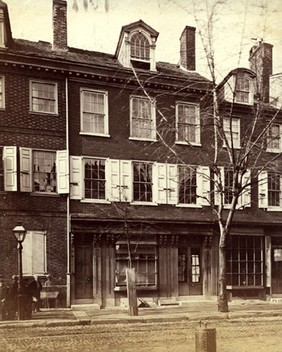House of Industry Site
Introduction
Text-to-speech Audio
Images
Engraving of the House of Industry, ca. 1850s. Castner Scrapbook Collection, Free Library of Philadelphia (public domain)

House of Industry, ca. 1870. Image courtesy of the Philadelphia Free Library, via Explore PA History (public domain)

Backstory and Context
Text-to-speech Audio
Class tensions were high in 1840s Philadelphia; backlash against the influx of European immigrants erupted into anti-immigrant violence in 1844. The Society for the Employment and Instruction of the Poor, an organization managed by both men and women, founded the House of Industry in response to the needs of the poorest residents of the city, particularly immigrants. It was a separate organization from the house of industry operated by the Female Society of Philadelphia for the Relief and Employment of the Poor, founded several decades earlier.
Initially, the main populations of immigrants served by the house were English-speaking people from the British Isles, and the organization trained them to make shoes, rugs, clothing, baskets, and brushes. It also provided housing, predating the settlement house movement which would emerge in the United States several decades later. As immigration from southern Europe, particularly Italy, became more common, the organization shifted to offer English language classes as well. The organization's efforts sought to alleviate poverty, but also to assimilate immigrants into mainstream American culture.
In 1921, the House of Industry formed the Philadelphia Welfare Federation with several other settlement houses. Twenty-five years later, in 1946, the organizations formally merged into the United Neighbors Association. This new organization underwent further changes in the 1960s; United Communities Southeast Philadelphia is the successor of the House of Industry and other similar organizations.
The architect of the original House of Industry building was Thomas U. Walter. The illustration of the building in the mid-nineteenth century appears different from later photographs of the building, so there may have been renovations or even multiple structures on this site. The building is no longer standing.
Sources
Explore PA History. House of Industry Historical Marker, Explore PA History: Historical Markers. Accessed April 16th 2021. http://explorepahistory.com/hmarker.php?markerId=1-A-3D3.
Historical Society of Pennsylvania. The Friendly Society, one of Philadelphia's first charitable organizations, was founded in what year?, Question of the Week. June 5th 2011. Accessed April 16th 2021. https://hsp.org/blogs/question-of-the-week/the-friendly-society-one-of-philadelphias-first-charitable-organizations-was-founded-in-what-year.
Philadelphia Society for the Employment and Instruction of the Poor. Report of the Philadelphia Society for the Employment and Instruction of the Poor for the seasons of 1847-1848. Philadelphia, PA. Merrihew and Thompson, 1848. Internet Archive. Accessed April 16th 2021. https://archive.org/details/reportofphiladel00phil_0/page/n5/mode/2up
https://libwww.freelibrary.org/digital/item/44607
http://explorepahistory.com/displayimage.php?imgId=1-2-1DAA
